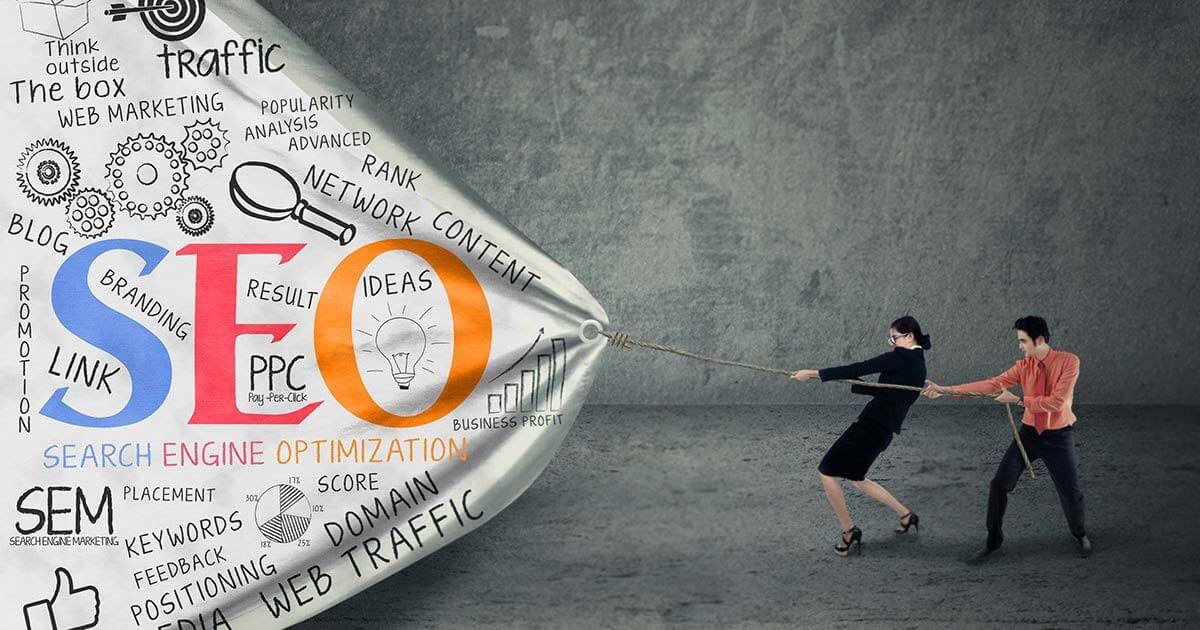What is search engine marketing (SEM)?
Search engines today are transportation hubs for the information on the World Wide Web. Together with e-mail communication, web searches are by far the most frequently used applications of the internet. Those trying to locate information, products, or service providers online generally tend to use search engines such as Google, Bing, or Yahoo. Conversely, web content that does not appear in the results lists of these search engines essentially remains invisible to internet users. For this reason, it is especially crucial for online stores and retailers to secure a prominent position in these search result lists to generate as many internet visitors as possible. By using various methods of search engine marketing (SEM), websites are able to increase their visibility.
SEM entails placing paid ads in search engines (SEA = search engine advertising) as well as implementing measures to increase a website’s ranking in the organic search results by optimising content (SEO = search engine optimisation).
How does SEM work?
Together with its sub-disciplines of SEO and SEA, search engine marketing is considered to be the most important online-marketing channel currently available. One reason for this is SEM’s fundamentally different approach to advertising measures when compared to more conventional online marketing channels. While display advertising, e-mail marketing, social media advertising, or offline advertising all fall under the category of “push strategies”, SEM occurs through “pull marketing”. Instead of receiving a barrage of unsolicited ads, as is the case in traditional marketing efforts, customers search Google, or another search engine, for things like “buy shoes” or “order groceries”, thereby revealing their intention to purchase a particular good or service to the advertiser. Following this, search-related advertisements are considered to be valuable clues about future customer behavior. Taking advantage of this knowledge enables search engine marketing activities to greatly cut down on scatter loss.
Search engine marketing via Google, Bing and Co.
Search engine markets in most countries are typically dominated by one single provider. Globally Google has about 90 percent of the desktop search engine market share and about 94 percent of the mobile market share. The figure in the UK at the moment is at around 88 percent, with the rest of the market shared between Bing, Yahoo, AOL, etc. Other country-specific search engines include Russia’s Yandex and China’s Baidu. While these search engines enjoy market-leader status at home, they remain largely irrelevant to the rest of the world.
What’s the difference between SEA and SEO?
As subcomponents of the larger framework of search engine marketing, search engine advertising (SEA) and search engine optimisation (SEO) both share the same goal: to gain more visitors for a website. Where these two instruments vary, however, is in their respective uses. While SEA focuses on fee-based fade-in advertisements that appear in tandem with the search results, SEO strategies rely on an entirely different approach: optimising a website’s organic search results. With SEO, the search result ranking is not entirely dependent on advertising budgets. Instead, websites seeking to increase their placement are required to follow the rules that the relevance-based algorithms of search engines have laid out.
Search engine marketing with search engine advertising (SEA)
Due to the dominance of Google in the United States, search engine advertising commonly takes the form of the Google product, AdWords. In addition to normal search engine result lists, this programme also delivers fade-in advertising images and texts that are triggered to appear once a specially assigned keyword is used. These advertisements generally appear highlighted in the right side of the browser window and before and after the organic search results. Search engine providers rely on companies’ willingness to shell out large sums of money on search engine advertising, with Google generating more than 95% of its turnover from AdWords revenue alone. There is no charge for simply depicting an advertisement in the search result list. Payment is only required after a user has clicked on an advertisement, and, as a result, accessed the advertiser’s website. Costs for this service are not fixed, rather they are determined through an auctioning process. Whether and to what extent an ad appears during searches is determined by more than the just the amount of the customer’s bid. In order to deliver users the most relevant results for fade-in advertisements, ads are first categorised using Quality Score and subsequently displayed in the order of their relevance from the user’s perspective.
Search machine marketing with search engine optimisation (SEO)
Website operators wishing for prominent locations in the organic search result lists have a more wide-ranging task to deal with than their SEA-focused counterparts. Measures enabling a website to organically appear higher in the search engine result pages (SERPS) are what encompass the practice known as search engine optimisation (SEO). SEO is comprised of two different subcategories: on page optimisation, which shapes websites so that they are easier for search engines to read, and off page-optimisation, which primarily has to do with the practices of link marketing.
- On page SEO measures: optimising website content according to information quality, keyword optimisation, appearance, and technical adjustments of a search engine friendly page structure (header, html tags, internal links, etc.)
- Off page SEO measures: optimising incoming links according to qualitative and quantitative aspects: search engine-optimised backlink profiles and supporting presence in social networks through social signals.
How sustainable is search engine marketing?
Compared to other online marketing channels, search engine optimisation offers a significant advantage in terms of sustainability. While search engine marketing with purchased ads are only as good as their respective advertising budgets, SEO optimisations in the on page and off page subcategories continue to win over new customers long after their initial investments have been accounted for. Websites that secure good positions in organic searches through SEO optimisation ensure a steady stream of site visitors for years. Marketing channels, such as SEA or display ads, on the other hand, only generate visitors as long as the advertisement is being run.








